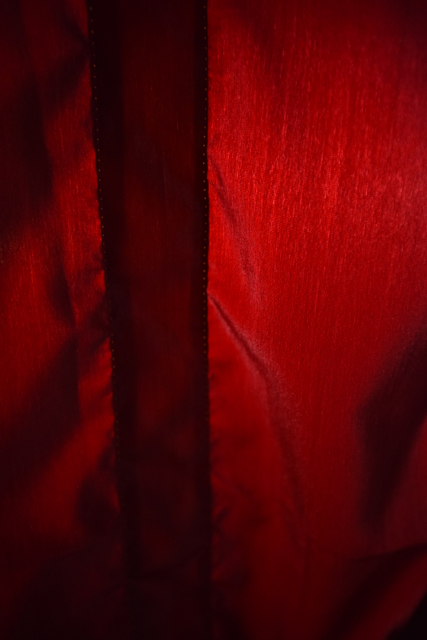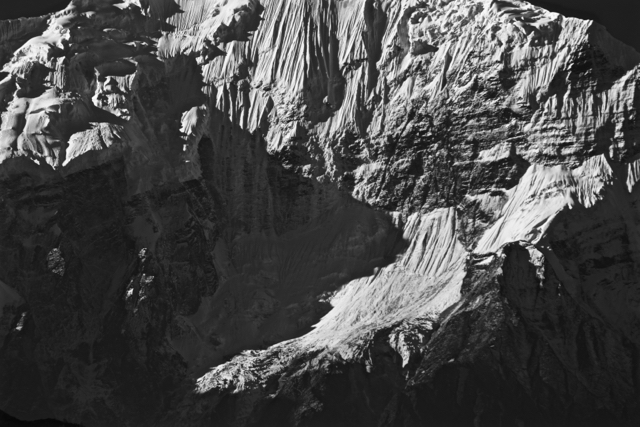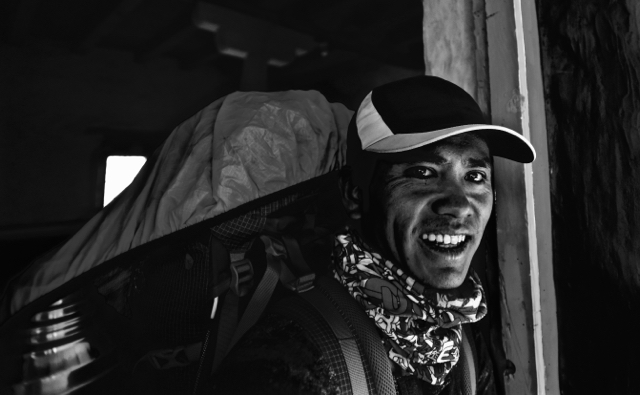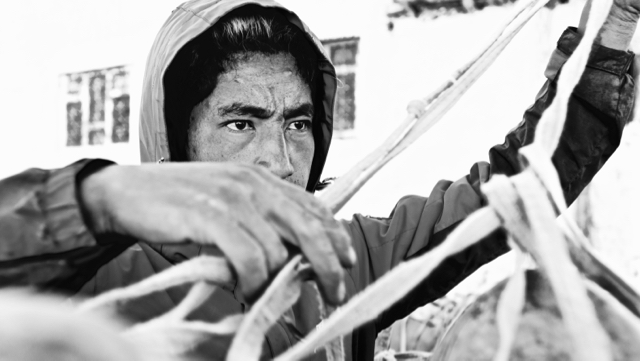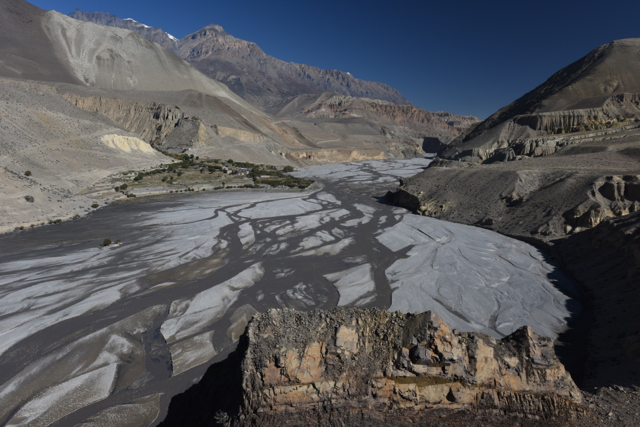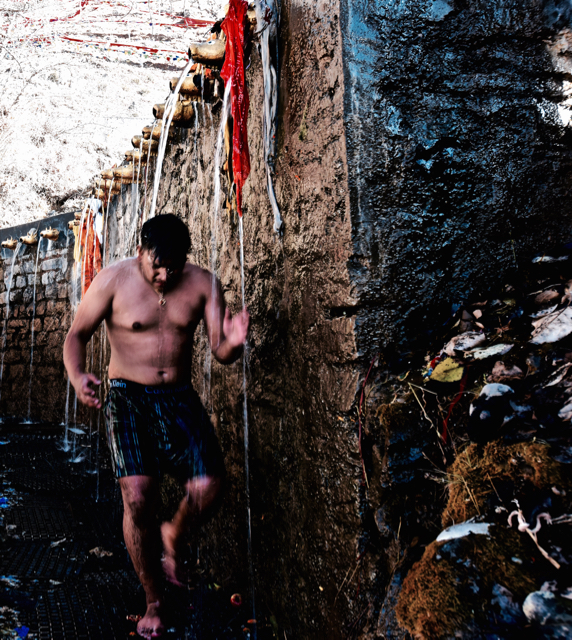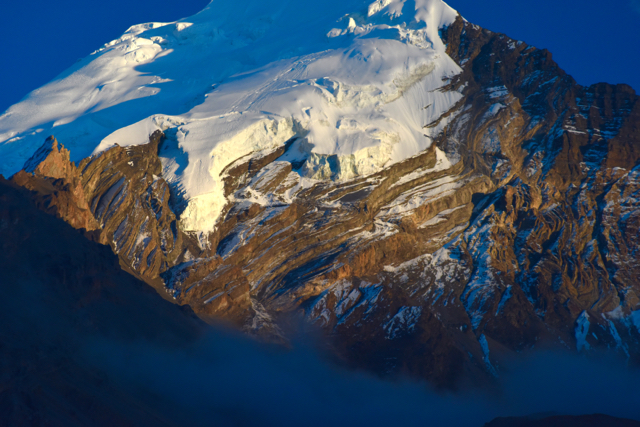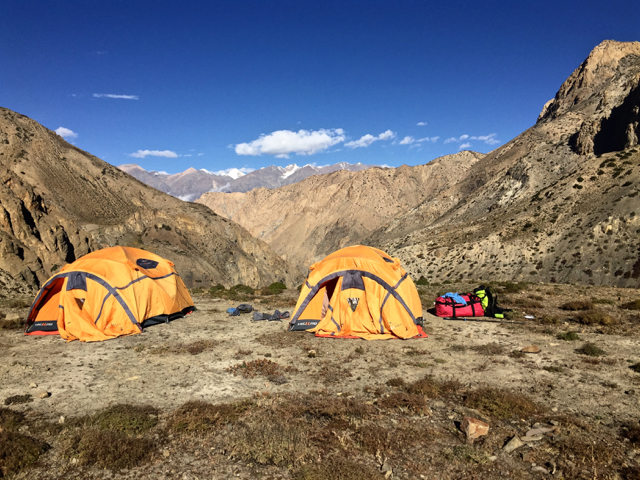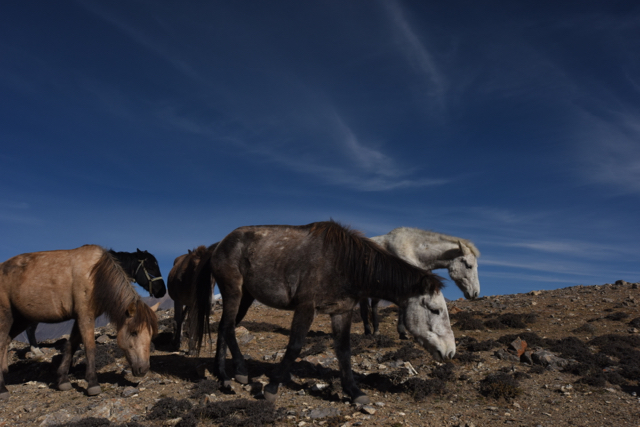Returns can soothe and returns to mountain spaces can do so with a powerful combination of elemental force and nostalgia for me. It remains a truth as I return to Mustang, Nepal. A late in the year journey where light fades early and where the 6pm winds rip with a little extra force. A route that at times fades to mere hints of a trail it remains a vestige of sorts of a time gone by where trade and travel could be done either in the lower valleys, or in the more remote and daunting high lines. This proposed route takes the high lines bending and moving above four thousand metres on a path that has largely been forgotten.
The route lies along the eastern flank of the Kali Gandaki along an old trade route that hauled salt and other goods along a series of high paths. Eastern Tibetan Khampas created training stations along this weaving line, when they resisted the Chinese occupation of Tibet in the late nineteen forties and early fifties. It remains too, part of the domain of the Snow Leopard.
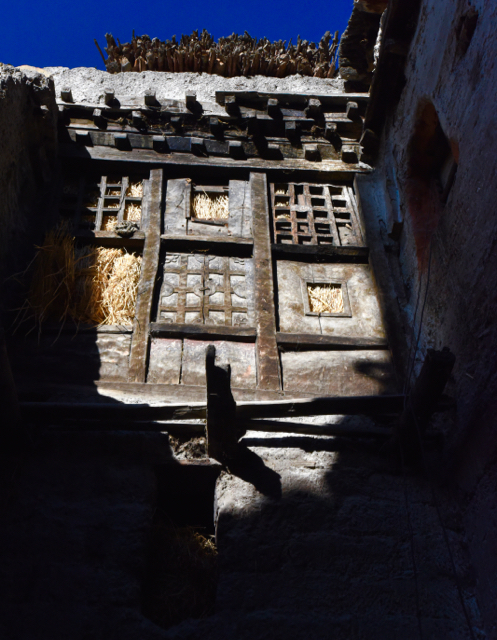
In Kagbeni, many doorways and windows are framed low to the ground to prevent the skeleton spirits (called Zumba) from entering at night (they could not bend their bodies)
Last year a crew of friends and I along with my wife, Julie, travelled its length from Lower Mustang north to the sacred valley of Chozong west of Lo Manthang, where the air still lingers with the history of powerful tantric masters. Trade, Khampas and tantric traditions all wove themselves into spaces that still glitter and ripple in the sun’s rays. Mineral deposits infuse sheens of taupe, mauve and red throughout the stones and fossils which blast out tones that stun the human sensors.
This year, Debra Tan joins me. We hope to trace a very tangible line of both trade and (perhaps more vitally) water. Where the water emanates from, where it flows, and if it flows at all. Last year’s journey revealed empty villages and dry river valleys that hadn’t been dry for as long as anyone could remember. Deb and I have been drawn to these places where that very finite resource of water emanates out of and from – the mountains. We want to local’s views and their tales of living within the Himalayan water towers, the often forgotten ‘Third Pole’. Mustang in its time had close relations with distant kingdoms due to trade and the wandering nature of armies, caravans and pilgrims. Ladakh was one such space and of course Eastern Tibet, Kham, with the Khampas being well known for their exploits on both sides of the ethical line.
The journey too is to simply propel the self back into the thin-aired spaces that have always drawn and instructed me in all things. I have my fuel: two cakes of old tree Naka Sheng Puerh; we have a familiar (and satisfying) smattering of characters for this journey – elegant man of the kitchen and high mountain delights, Kiran, rough and ready horseman Dhrabinder who’s abilities to secure loads that never ever seem to loosen are legendary, and local Abu who effortlessly wavers between Bollywood movie star and agile mountain machine.
New faces and characters too, with the powerfully built Magar, Subash, along with some extra porter power in Gopal, Manush, and Santosh joining and supporting us. These journeys are little without a sense of community and nothing without the efforts of the team.
The craving too for an autonomy is sated with a pending departure. Should all collapse, our team of mules and two legged mortals (and tea) has what it needs. We are in a small way at least, self-contained.
Tea and a mountain morning chill is helped along by a huge spoon of local honey and we are off on a late October morning. Muscles and blood have memory and those first hours of moving are part familiarity with a wedge of the new, with everything blending into a stew for the senses. Mountains, its air, its light and its never ending sound of wind all burrow into the skin and psyche and rev up some part of the old inner core.
We head out of Jomsom to Kagbeni and then northeast towards Muktinath. Sacred to both Buddhists and Hindus, its 108 spouts of water billow outwards as we dip our hands and heads beneath each jet. Bodies move clockwise dipping, slurping, bowing, and in some cases racing through the glacial water partly naked. Here, reverence is necessarily done with a touch of suffering. A reminder that homage demands something other than simply believing. It is stirring to see. A simple reminder that many are entirely content to use time and effort to bow to the unseen but felt world that holds sway.
Northwards to Jhom and then a different kind ascent begins, taking us away from the Kali Gandaki and into the belly of the eastern layers of mountains. Debra alternates between foot travel and her mount, Ola, so named for its dark colour. Tibetans often simply refer to their horses by way of their colour and Abu’s mount is a sturdy thick-legged black matt beauty.
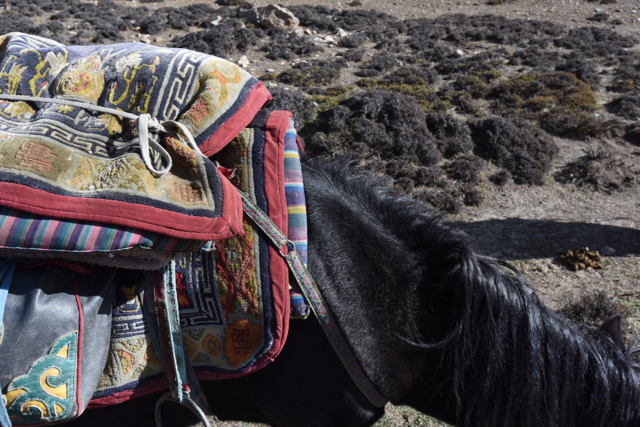
Ola is all of his glory. Tibetans cannot resist a little decorative colour in the matts that they lay atop saddles. A reminder that colour can add some zest.
Green Camp is the wind blown recess that it was last year with the fading light seeming to switch the bludgeoning winds “on”. Green Camp’s Winter winds are such that all bodies burrow into tents, covers, and downs.
Teams, or the idea of them; the bonding and working towards a similar end, doesn’t always simply gel. Our team is made up of a collection of mountain peoples and for me, it is fascinating to watch as they mix their personalities, their styles and their efforts into the collective. All of it is (as it inevitably tends to be in my experience) held together by a ‘chef’. In this case, it is the small, immaculate, and the near dictator, Kiran, who quietly ensures that there is order at all times.
This Khampa route and its sparse lines remind that it is a direct line into the very heart of the elements. Leave it to the bullet-proof Khampas to devise a route that weaves right along and into Mother Nature’s very moods. Scribbling words in a small notebook of mine within the nighttime blitz of cold comes to little as the churning winds find ways of slicing into the tent. I leave the pages almost clean and stuff the frozen pen back into my pack.
Vague but thudding with meaning within me is the fact that I’ll soon reconnect with my guru and one of the few mortals I genuinely revere, old trader and wanderer of the Himalayas, Kunga. It is as vital a reason for this journey as any. It pulls me like a beacon.

